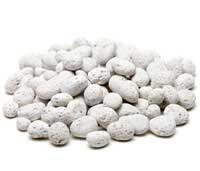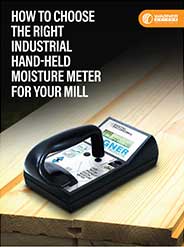Lightweight Concrete vs. Normal Weight Concrete
Lightweight concrete presents a number of benefits to the building industry–lighter weight on a building’s structural load, greater sound absorption, better shock absorption and flexibility, improved insulation values–when compared to standard concrete blends.
However, it has also been suspected in increasing cases of moisture-related flooring failures. Knowing the advantages and disadvantages of lightweight concrete can be the foundation for making better choices at the design and installation stages.
Concrete Mix Differences
The prime difference between standard concrete mixes and lightweight concrete mixes lies in the aggregate that is used in the concrete mixture.
Standard concrete mixes typically use crushed natural stone as the coarse aggregate in the mix (along with Portland cement, water, and sand). The actual weight may vary slightly depending upon the local stone that is available, but generally, natural stone is relatively dense for its size, adding to the weight of the concrete mix. (This also adds to increased transportation and equipment costs.)

Lightweight concrete instead uses a variety of alternate aggregate materials that may include more porous rock like pumice, manufacturing byproducts like fly ash or slag, or clay, shale or slate that has been treated with a heat process that expands the material and creates a series of internal pores in the aggregate.
In effect, these materials provide lower mass per volume in the aggregate. Lightweight concrete may also be “foamed” by mixing a cement slurry into a pre-formed foam or AAC (autoclaved aerated concrete) in a process which introduces entrained air into the mix to reduce the final concrete weight.
While the change in the aggregate for lightweight concrete does not seem to significantly impact the final concrete’s compressive strength, any type of lightweight concrete has a significant trade-off in two areas: the advantage of reduced structural weight once it’s dry, and the disadvantage of moisture retention that makes that drying process significantly longer.
Concrete Moisture Testing Differences
The weight advantage of lightweight concrete may provide the best benefit, but the same feature that reduces the weight–the pores in the aggregate or foam, or in the air introduced during mixing–also become additional spaces within the concrete that can trap and retain moisture.
Unless a self-desiccant or another chemical material that locks moisture into the slab is also introduced, the water from the initial mix and hydration process must eventually find its way to the surface to evaporate away.
Certain admixtures like fly ash retain moisture for longer periods, and the sheer volume of the many additional pores of the aggregate will also increase the amount of water retained, as well as the weight that additional moisture would cause until it is released.

Because lightweight concrete has this increased capacity for moisture absorption, it can take two to three times longer than regular aggregate concrete to dry. This can present real challenges for the builder or contractor tasked with keeping the building schedule on track and under budget if this characteristic of lightweight concrete was not accounted for during the design and planning stage.
The delays can be significant setbacks to the schedule or additional costs for dehumidification processes and equipment.
It also means that surface-based concrete moisture test methods are at an extreme disadvantage in trying to gauge the level of moisture in a lightweight concrete slab. In fact, this became evident as moisture-related flooring failures became more common as the use of lightweight concrete expanded, and based on the findings, the ASTM has specifically disallowed calcium chloride (CaCl) testing for lightweight concrete.

Free Download – 4 Reasons Why Your Concrete Is Taking Forever to Dry
So how can you mitigate the disadvantages of lightweight concrete’s propensity for retaining moisture when applying flooring or finish to the slab?
- Allow time.
As has already been pointed out, lightweight concrete takes significantly longer to dry. By understanding this at the planning stage, the schedule can be adjusted to maximize the drying time. - Optimize ambient conditions.
There are a number of environmental factors that influence concrete drying time. Having the slab at service condition, or adjusting airflow, relative humidity (RH) levels and temperature to maximize the drying process can optimize the movement of the moisture from the slab to the surface and away. - Test with RH testing.
Only RH testing, like the Rapid RH®, can accurately gauge the moisture condition of a lightweight concrete slab. Because the Rapid RH® places sensors within the slab at the optimal depth, test results will provide an accurate picture of the RH within the slab and allow for informed decisions about installation schedules, adhesive or finish choices and remedial steps if necessary. The Rapid RH® provides fast, easy-to-use technology for immediate updates on the slab conditions. It also complies with ASTM F2170 to allow documented warranty information when necessary.
Lightweight concrete has distinct advantages and disadvantages in the building industry. Knowing what they are allows building and flooring professionals to make informed decisions, and includes the necessity of accurate RH testing to confirm and document the readiness of the slab.
The Rapid RH® helps you be sure that the slab is ready for the next step towards a long-lasting and beautiful floor.
Are you looking for a concrete calculator to estimate how many cubic feet and cubic yards of concrete you will need to fill your space? Try out our concrete calculator.
Jason has 20+ years’ experience in sales and sales management in a spectrum of industries and has successfully launched a variety of products to the market, including the original Rapid RH® concrete moisture tests. He currently works with Wagner Meters as our Rapid RH® product sales manager.
Last updated on December 10th, 2024




Can lightweight concrete be used for a pipe encasement at riverbed? in another word, how is the lightweight concrete durability and exposure to water flow? I need to reduce the additional weight of new construction (the pipe is existing)
Anne:
Thanks for the question, but I believe you would be better served consulting with your local redimix plant directly or a structural engineer.
Is there a rule of thumb our industry uses as a water loss percentage when determining what the final pcf of cured concrete slab would be? For example, in a normal concrete slab is it conservative to assume that 70% of the original water evaporates and 30% of it is retained for the lifetime of the slab? Is there a document that sheds light on this? Any help on this would be greatly appreciated!
Pablo:
Thanks for the question. I am not aware of a document that addresses your question as you specifically put it. That being said, if you have a water to cement ratio of .5 (most would recommend that this would be a maximum target mix ratio) and we know that a water to cement ration of .27-.29 is required for full hydration, then about 58% of the water is used up just in this process. In my opinion, the numbers you have thrown out don’t seem unrealistic.
It’s good to know that lightweight concrete has a lot of benefits. I think I’ll have it delivered to a home by a good company since it has reduced the structural weight that I need for my driveway. I’ll be sure to allow it to dry so that I can use the driveway properly.
There are many benefits of lightweight concrete. Increased strength due to internal curing, Improved durability, Decreased shrinkage cracking due to greater moisture retention, Reduced weight on structural elements.etc which is really better than normal concrete.
please solve the question :distinguish between ‘light weight’ and ‘nominal weight’ concrete?
Hi Jason, Can you get into the differences between lightweight and sand-lightweight concrete? Is sand-lightweight just the aggregate that is lightweight and the sand is just normal, heavy sand? Or do I have it backwards? I know there is a difference in structural design.
Jason:
Thanks for the question. Honestly, I had to look up information on “sand lightweight”. Here is some info that made the most sense to me: https://www.eng-tips.com/viewthread.cfm?qid=134670. I hope it helps.
Jason
Hi Jason. can lightweight concrete be used for an outdoor elevated patio? Are there any long term concerns from exposure to the outdoor elements of weather or any concerns of overall strength compared to normal concrete? Is lightweight concrete typically available in 3000 psi? Thanks
Thomas:
Thanks for the question. They use lightweight structural concrete in many different applications with 3000-5000psi being common. I would consult local builders and/or building codes for your specific application.
Thanks,
Jason
Could you describe the moisture related failures of lightweight concrete in more detail? Specifically is this just related to the initial cure time or will it permanently retain more moisture and possibly more easily introduce mold?
Thank you!
Chris:
Thanks for the comment. Here is a great study that should answer your questions. https://www.escsi.org/wp-content/uploads/2017/10/4366.1-Concrete-Floor-Drying-Study-for-ESCSI.pdf Keep in mind, we are talking about lightweight aggregate concrete, not gypsum based products. Unfortunately, many people I talk to believe these are on in the same. Hope this helps.
Thanks,
Jason
Hi I am working at construction project. we have foam concrete on roof area.I calculate the total volume of roof to order quantity. But i found that the quantity actually gone on site was 40% more than the actual quantity that i calculated for roof.So how i calculate the actual quantity?
Sujal:
I am not even going to try for an answer on this one. You are outside of my area of expertise. Good Luck.
Jason
Hi Jason,
I’m wondering how much higher cost (%) of lightweight compare to normal concrete.
Thanks
TN
TN:
Thanks for the question. There is a cost variance that may vary from region to region. I would contact your local redi mix company for cost information.
Thanks,
Hi I was wondering. Has anybody ever poured lightweight concrete for a driveway? Would it be feasible? Would it hold up structural to a vehicle?
JD:
Thanks for the questions. I can find references to lightweight aggregate concrete’s potential for driveways, but If you are talking Gypsum based products (a lot of people call these types of products lightweight concrete…incorrectly) I can find nothing, nor would I have expected I would. Either one of these would be more expensive than a standard weight, Portland cement based product, with no appreciable benefit for the application you are proposing.
Jason